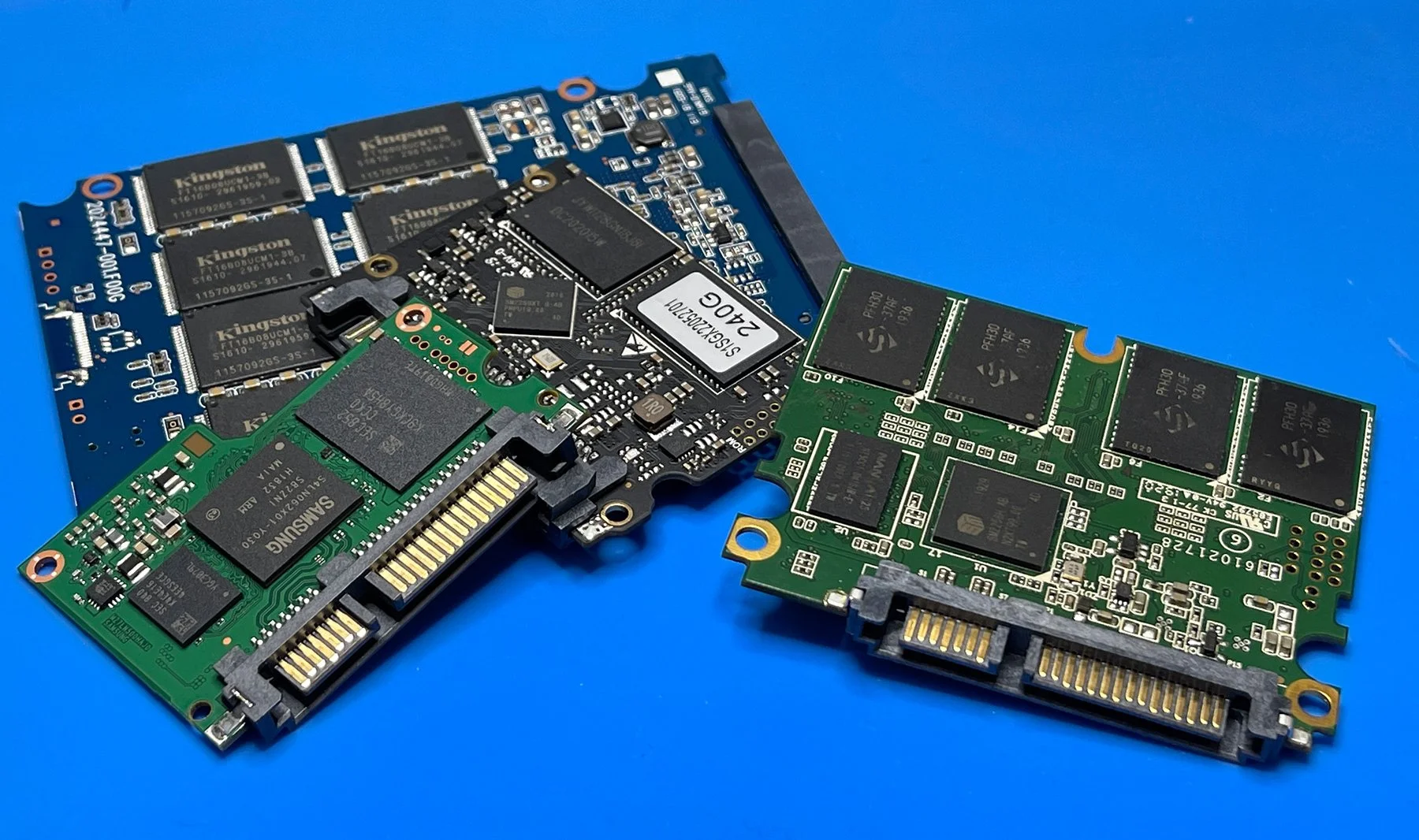failing SSD symptoms.
Solid-state drives (SSDs) have revolutionized data storage with their speed, durability, and reliability compared to traditional hard drives. However, despite their lack of moving parts, SSDs can still fail over time. Unlike HDDs, which often provide obvious warning signs like clicking noises, SSD failures can be more subtle—making early detection crucial to prevent data loss. In this blog, we’ll cover the most common symptoms of a failing SSD, the causes behind them, and what you can do to protect your data before it’s too late.
warning signs you shouldn’t ignore.
1. Slow performance & freezing
One of the earliest signs of SSD failure is sluggish performance. If your SSD was once lightning-fast but now takes forever to open files, boot up, or load applications, it could indicate a problem.
Symptoms:
System takes unusually long to boot.
Files and applications open significantly slower than before.
Frequent freezing or stuttering, even on simple tasks.
Why it happens:
Excessive wear on NAND flash memory cells.
The SSD’s controller is struggling to process data.
2. Corrupted files & data loss
An SSD that randomly corrupts files or causes missing data is a serious red flag. If you notice that documents, photos, or videos become unreadable, or files keep disappearing, your SSD may be on the verge of failure.
Symptoms:
Files won’t open or return errors.
Documents, images, or videos appear garbled or incomplete.
Unexpected system crashes when accessing files.
Why it happens:
SSD blocks are wearing out, making data unreadable.
File system corruption due to sudden shutdowns or firmware issues.
3. Frequent blue screen of death (BSOD) errors
If you’re getting frequent BSOD crashes on Windows or kernel panics on macOS, your SSD might be to blame—especially if the errors mention disk-related failures.
Symptoms:
BSOD errors with messages like "INACCESSIBLE_BOOT_DEVICE" or "CRITICAL_PROCESS_DIED".
Sudden system shutdowns and restarts without explanation.
Why it happens:
SSD read/write errors prevent the system from accessing critical OS files.
Failing SSD firmware or controller issues.
4. SSD becomes read-only
A failing SSD may enter read-only mode, where you can still access your data but can’t save, modify, or delete files. This is an internal failsafe to prevent further damage when the SSD detects excessive wear.
Symptoms:
You can open files but can’t save or modify them.
You get write errors when trying to add new data.
Why it happens:
NAND flash cells have reached their lifespan limit.
Firmware corruption prevents write operations.
5. System fails to recognize SSD
If your computer suddenly can’t detect your SSD or shows errors during boot, the drive might be failing.
Symptoms:
"No Bootable Device" or "Operating System Not Found" errors.
SSD missing from BIOS or Disk Management.
Frequently need to restart your system to detect the SSD.
Why it happens:
SSD controller failure.
Connection issues due to a faulty cable or loose connection.
Drive degradation due to excessive write cycles.
what to do if your SSD shows signs of failure.
If you notice any of these symptoms, take immediate action to avoid data loss.
1. Backup your data immediately
If you notice any of the symptoms above, back up your data immediately. Use an external drive or cloud storage to keep your important files safe.
2. Run an SSD health check
Use SSD diagnostic tools from the manufacturer or third-party options to assess your SSD's health. These tools provide valuable insights into its status and potential issues.
3. Update firmware
Outdated firmware can cause instability, so keeping your SSD's firmware up to date is crucial. Manufacturers regularly release updates to fix bugs and enhance performance. Check the manufacturer's website for the latest version.
4. Check for driver issues
Sometimes, SSD issues stem from outdated or corrupt drivers. Make sure you have the latest drivers installed to ensure optimal performance.
5. Use CHKDSK or Disk Utility
On Windows, use the CHKDSK command to scan for and fix file system errors. On macOS, use Disk Utility for similar checks and repairs.
6. Replace the SSD
If the SSD is beyond repair or nearing the end of its lifespan and failure is imminent, the best course of action is to replace it before it becomes completely unreadable. Invest in a high-quality SSD from a reputable manufacturer for better longevity and performance.
7. Seek professional data recovery
If you're unable to diagnose or fix the issue yourself, consider seeking help from a professional data recovery service. In most cases, they can successfully recover data from failing drives.
preventive measures for SSD longevity.
Implementing preventive measures can help extend your SSD's lifespan, maintain optimal performance, and reduce the risk of unexpected failure.
1. Regular backups
Regularly back up your data to protect against SSD failure and potential data loss.
2. Monitor SSD health
Use diagnostic tools to periodically check your SSD’s health. Early detection of issues can help prevent catastrophic failures.
3. Avoid overloading the SSD
Keep some free space available to maintain optimal performance. A nearly full SSD can experience increased wear and reduced efficiency.
4. Enable TRIM
Ensure TRIM is enabled to help the SSD manage unused data blocks efficiently, improving performance and longevity.
5. Minimize frequent write cycles
Reduce excessive write operations to extend your SSD’s lifespan. Since SSDs have a limited number of write cycles, avoiding unnecessary writes can help prolong their durability.
If your SSD has already failed and you need help recovering your files, Kotar Data Recovery specializes in professional SSD recovery. Whether it’s firmware corruption, NAND wear, or complete failure, they can help you get your data back safely and securely.

